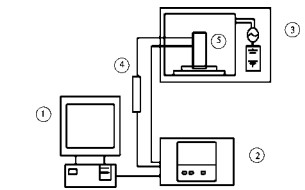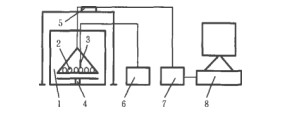Effect of Different Drying Methods on the Quality of Tricholoma

Abstract: The effects of microwave drying equipment, hot air drying, vacuum freeze drying and microwave vacuum drying on its color, nutrients, amino acid composition and volatile components were studied with fresh pine mushrooms as raw materials, which provided a theoretical basis for the optimization of the drying method of pine mushrooms. The results show that: vacuum freeze-drying can better maintain the color of the pine mushroom, and other drying methods will cause the browning of the pine mushroom. After drying, the content of fat, protein and total sugar in the pine mushroom increased.
The vacuum freeze-drying group had the highest protein and total sugar content, which were 247.74 mg/g and 207.19 mg/g, respectively, and the lowest fat content was 30.63 mg/g. The microwave vacuum drying group had the highest fat content, 39.33 mg/g, total sugar content. The lowest was 166.99 mg/g; the hot air dried group had the lowest protein content of 226.01 mg/g. The total phenolic content of Tricholoma matsutake in the hot air drying group was the highest, and the lowest in the vacuum freeze-drying group were 7.42 mg GAE/g and 3.89 mg GAE/g, respectively.
The total amino acid content was in the order of vacuum freeze-drying group > microwave vacuum drying group > fresh pine mushroom > hot air drying group. Among its various essential amino acids, the first limiting amino acid was methionine and cysteine. Fresh pine, hot air drying group, vacuum freeze drying group and microwave vacuum drying group detected 21, 36, 31 and 31 volatile components, respectively. The hot air drying group newly produced more alcohols, aldehydes, esters and hydrocarbons. The rich aroma of Matsutake, the microwave vacuum drying group can better retain the main flavor substances in fresh pine mushrooms. Comprehensive comparison, microwave vacuum drying is an ideal drying method for pine mushrooms.
Key words: Matsutake microwave drying; drying method; nutrient composition; amino acid; volatile component
Matsutake is a genus Basidiomycetes, Agaricus, Tricholoma, and Tricholoma. It is usually grown around pine trees and is mainly distributed in Korea, China, Japan, etc. It is known as the "king of bacteria" in Japan. Matsutake is not only rich in flesh and taste, but also rich in polysaccharides, phenols, proteins, cellulose, amino acids, unsaturated fatty acids, etc. It has anti-tumor, anti-oxidation, hypoglycemic and gastrointestinal effects. Wild pine mushrooms also have natural properties. Aroma smell. Fresh pine mushroom has high water content and is not resistant to storage. It is prone to various physiological changes after harvest, which reduces its commercial value and edible value. Drying is an important means to effectively control moisture and extend the shelf life of food.
The traditional drying method is sun exposure. This method has low energy consumption and low equipment investment, but the processing time is long and the product quality is poor. At present, the traditional drying method commonly used is hot air drying. Lu Keke studied the effects of six hot air drying modes on the polyphenols of Lentinus edodes. It was found that the dried polyphenols obtained at 55 °C were the highest in polyphenols and had strong antioxidant capacity. Thuwapanichayanan et al. studied the effects of hot air drying, heat pump and far infrared radiation-assisted heat pump drying on the quality of garlic. The results showed that the heat pump dried garlic had bright color and high content of allicin. Emerging drying technologies such as vacuum freeze-drying can better maintain the color of raw materials, and the product has good rehydration, but the drying time is long and the equipment investment is large.
Microwave vacuum drying is a drying method combining microwave drying and vacuum drying. The drying speed is fast, the product re-watering is good, but the material is not heated uniformly, the surface is easy to coke, and the equipment cost is high and the energy consumption is large. An Kejing et al. studied the effects of five different drying methods on the volatile components, active ingredients and antioxidant activities of ginger. The results showed that hot air drying and infrared drying can better retain volatile components, freeze drying and intermittent microwave convection drying. It can better maintain total phenol, total flavonoids and antioxidant capacity in ginger, followed by infrared drying and hot air drying, and the microwave drying effect is the worst.
The drying method has a great influence on the product quality. At present, the effects of different drying methods on the quality of cherries, apples, peppers, and oyster mushrooms have been reported, but there are few reports on the research on the drying of pine mushrooms. The research on the effects of drying methods on nutrient composition, amino acid composition, volatile components and senso